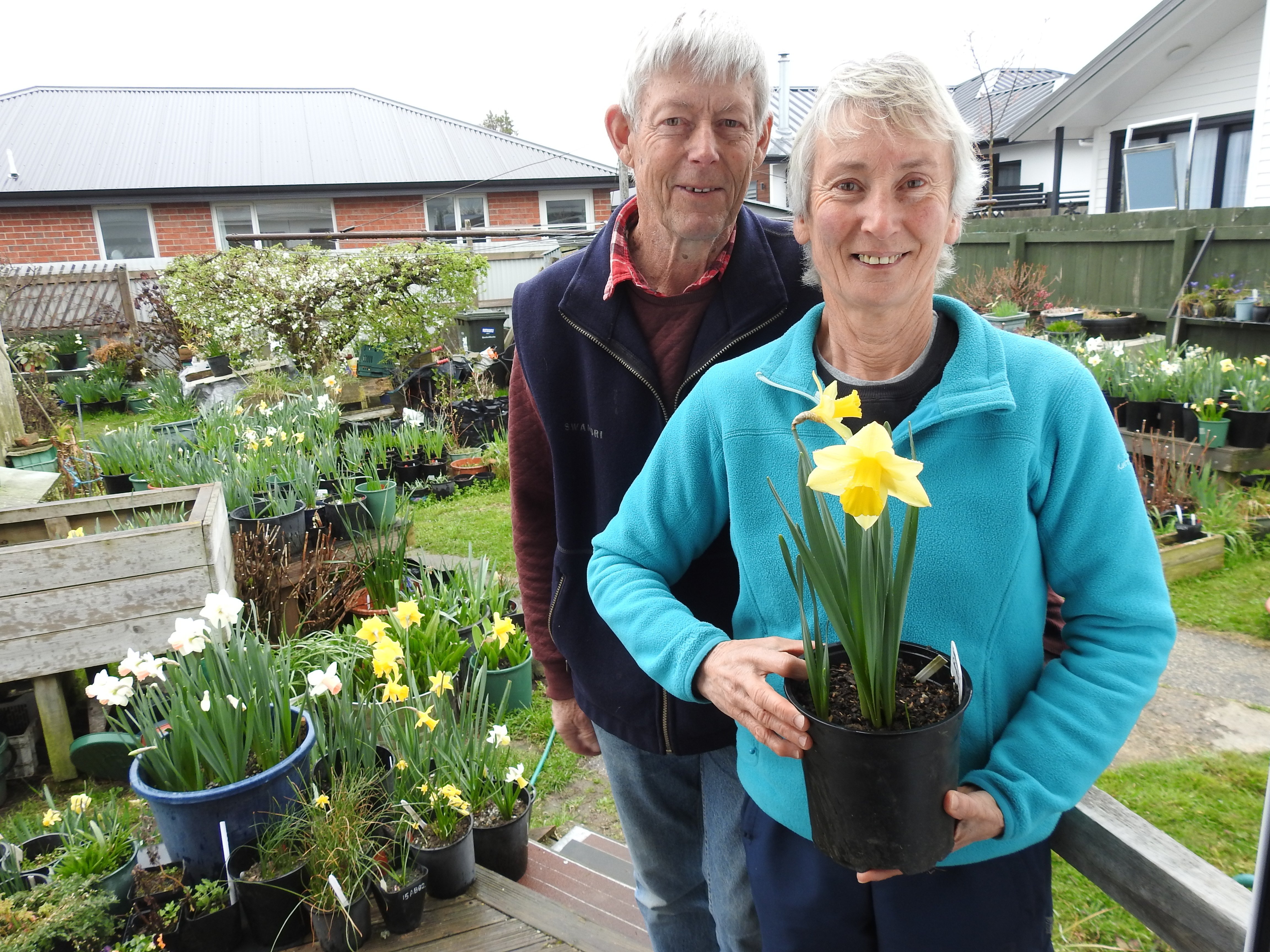
It’s addictive, Mrs Judd says.
"They are good for the soul, aren’t they?
"They lighten us up and they make us happy again that it is spring."
But she warns it is a never-ending obsession.
"Once it gets a hold on you, you’ll end up with more and more."
It is known as yellow fever, she says.
Mrs Judd is president of the Otago Daffodil Club, which comes under the umbrella of the Dunedin Horticultural Society.
This weekend the society is holding its spring show where Mrs Judd will have some of her prized daffodils on display in the intermediate section.
"The number one rule is always be nice to your show manager," she says, laughing, as her husband is in charge of setting up shows for the Dunedin Horticultural Society.

He encourages members of the public to enter the novice section.
"There will be plenty of people on deck to help.
"Just bring your best bloom."
The spring show is not only for members to display their pride and joy, but to also show the public the range of daffodils available, some of which have been bred by local growers.
Daffodils are classified into 13 different divisions, such as trumpet, tazetta or split corona.
All the flowers will be labelled with the variety, so visitors to the show can see which bulbs they want to order for the following year.
But Mr Judd warns visitors not to expect to be able to buy bulbs in spring.
"They are not available at this time of the year."
Mrs Judd’s love of daffodils is not limited to growing. She also breeds daffodils and judges them as well.
The "show season" for daffodils in the South lasts just five weeks. Mrs Judd will be judging at the Winton show next Thursday and Friday, before heading to Lincoln to help judge at the National Daffodil Society Show next weekend before heading to Te Anau on October 4.
But it is a passion she clearly relishes.
She has started to breed her own varieties, a process which takes eight years.
"It takes five years for a daffodil to flower from a seedling. Then you have to grow it for three years true to form.
"Only then can you apply for a name from the National Daffodil Register."
She has crossed Kinghorn with Cameo Sun and is pleased to see it flowering this year. But she will have to wait another two years before she can apply for it to be named.
Because Mrs Judd grows most of her daffodils in pots, she advises to change the soil mix every three years, to replenish the nutrients.
She says the most important thing to remember when growing daffodils is to not cut all the leaves off once the daffodil has finished flowering.
"The leaves are needed to give daffodils food."
If the dying leaves get messy she advises to tie them up loosely, but under no circumstances should they be tied in a knot.
"This interrupts the flow of sap back down to the bulb."
She stresses it is also important to remember to water bulbs in winter. Especially if it is a dry winter.
A shortage of water can cause stunted growth or a flowering blind, where the flower head will come up, but there will be no flower in it.
She says the main pest to be aware of is the narcissi fly "which is a nuisance".
"It looks like a little bumblebee, but browner in colour."
The fly tries to get to the bulb when the leaves are dying off, so it can lay eggs. The resulting larvae will eat the bulb.
"If you don’t keep those leaves pushed up right up against the edge of your stem, the fly can get down there. So keep leaves tied up and keep the soil pushed up against the stem."
The Otago Daffodil Club is 34 years old. It meets on the first Monday of the month. Like other clubs, it has speakers on various topics. Members meet about six times a year, but they don’t meet over the winter.
At this time of year, it’s all hands on deck for this weekend’s spring show.
"People are either helping in the kitchen, they’re stewarding, they’re judging, ... everybody just pulls in and helps."
Judging criteria
Six petals set in two clear triangular shapes.
The flower is looking at you (not facing down).
It has a strong stem.
It has good colour.
Petals have good substance.
National Daffodil Society Award
A founding member of the Otago Daffodil Club was presented with a national award last Friday.
Gilbert (Bert) Hill was presented with the National Daffodil Society’s David Bell Bronze Medal at a private function.
A citation said Mr Hill started growing daffodils more than 60 years ago.

Mr Hill was president of the club from 1995 to 2003, before becoming president of the Dunedin Horticultural Society from 2003 to 2007.
He has presented many talks on daffodils — modern pink trumpets and old varieties and their origins are of special interest to him.
He also helped organise the World Daffodil Convention in Dunedin in 2012, and in 2013 he wrote an article for the NZ Daffodil Annual called ‘‘The Charm of Old Daffodils’’.
He encourages new growers and members, often gifting bulbs from his collection.
He offers help with judging and gives advice on how to look after bulbs and how to get the best results on the show bench.
He worked with the late Ron Abernethy to establish a strong daffodil growing and showing group in the area.
He remains a senior daffodil judge in the Otago region and continues to present quality flowers at the local shows.
Spring Flower Show
When: This weekend, Saturday 2pm to 5pm. Sunday 10am to 4pm.
Who: Run by the Dunedin Horticultural Society.
What: Featuring daffodils, floral art, bonsai, raffles and a sales table.
Cost: $5. Exhibitors free.
NOTE: If you wish to exhibit a daffodil, preferably bring this today between 1pm and 6pm. First-time exhibitors welcome. You do not have to be a member.











